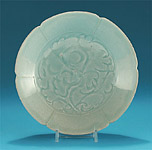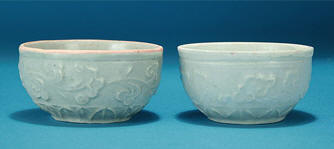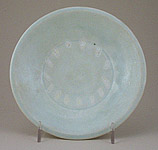PAIR SOUTHERN SONG DYNASTY YINGQING BOWLS
China, 960–1127 A.D.
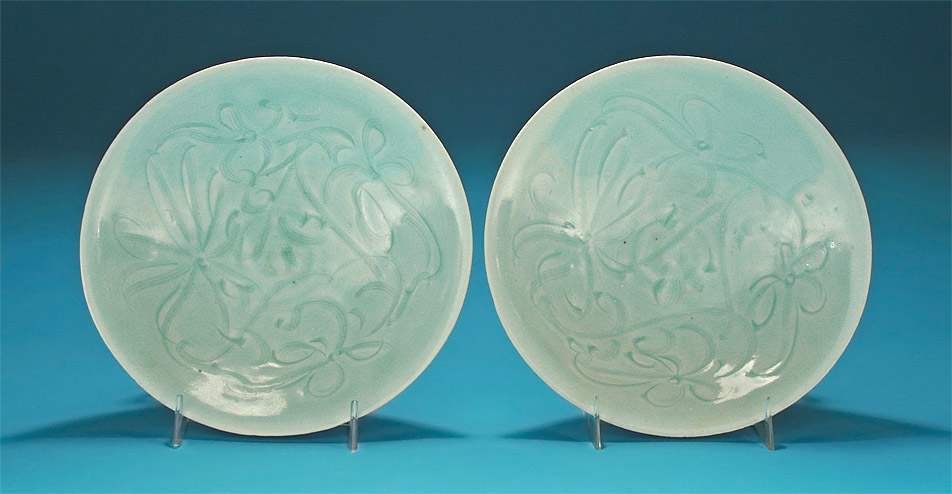
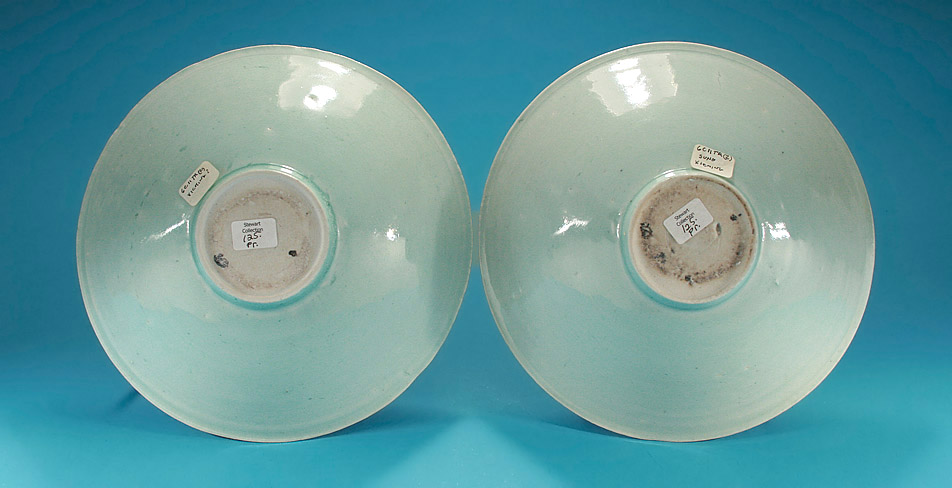
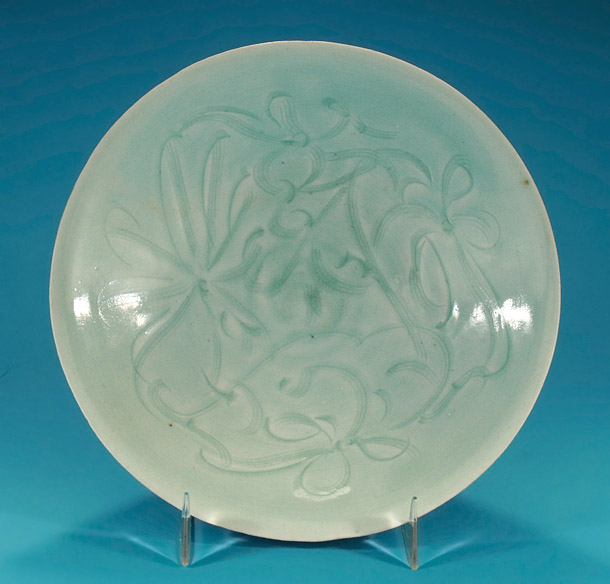
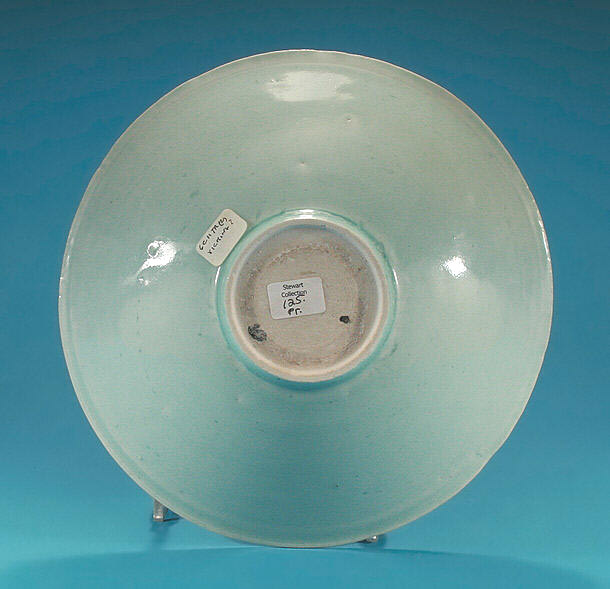
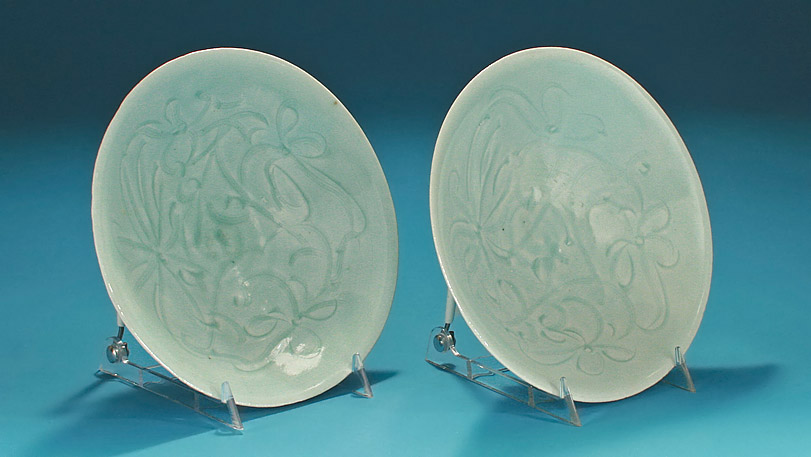
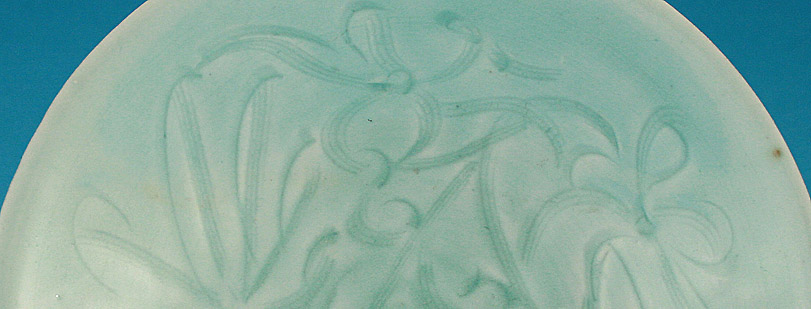
Each bowl of wide shallow form with a pale blue-green yinqing glaze, the interiors centering incised and
combed stylized vining blossoms, each raised on an unglazed foot
Provenance : Stewart Collection, bearing labels with collection numbers and annotation :
125. PR., and 6C11TA(2) over SUNG XICHING
Condition: Excellent, with some minor but usual glaze flaws
7 3/8" Diameter
SOLD
#5923
Please Inquire
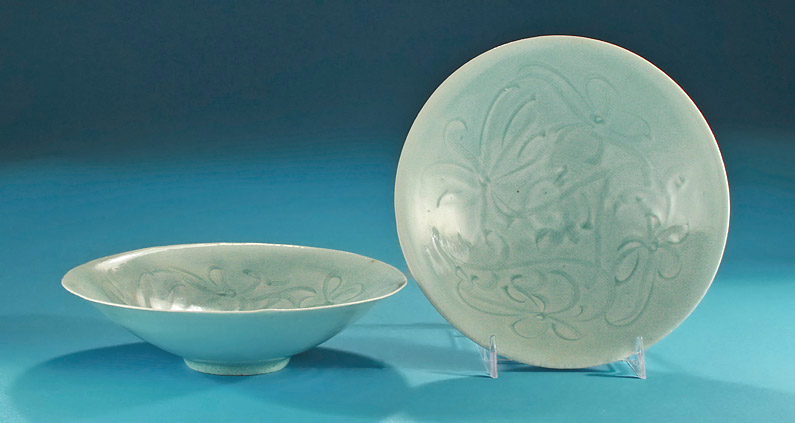
CELADON
Celadon is held to be the aristocrat of Chinese porcelains, production beginning in the 7th century, and reaching its
pinnacle in the 13th and 14th centuries. China, Korea, Vietnam and Thailand all made excellent ware. Originally called
Yue Ware, it became renamed Celadon after a character in a French play who ware a greenish costume (17th century).
The glaze itself contains a small amount of iron oxide. The ceramic is fired at a high temperature, being careful to
allow very little air into the kiln. The amount of air determines the color: little air produces the pale blue or qingbai
(yingqing); a little more air produces green; more air, olive to yellow or turquoise. Colors can also range to gray or
brown. The finish can be shiny
or dull, smooth or crackled
Celadon was held in reverence, thought to have magical properties: plates changing color if poison were placed upon them;
plates and bowls could talk; cure diseases; could summon religious forces. Newborn children of nobility were presented on
celadon. The best pieces were used in grave furnishing, especially children, which is why we have some excellent examples today.
For Related Qingbai / Yingqing Celadons, please click below:
We welcome and encourage all inquiries. We will make every attempt to answer any questions you might have.
For information, call (901) 761-1163 or (901) 827-4668 or email mfcreech@bellsouth.net
American Express, Mastercard, Visa and Discover accepted

